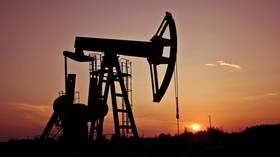The pandemic could lead to a major oil supply crunch

It may be counterintuitive to say that the oil demand crash and the resulting glut in 2020 could lead to an oil supply crunch in just a few years.
Yet, a growing number of experts and international agencies warn that the world could be headed for an oil shortage when oil demand finally recovers from the COVID-inflicted crisis in late 2022 or 2023.
Last year, the pandemic slashed global oil demand, which is not expected to return to pre-crisis levels for at least another year and a half. But the coronavirus also accelerated a structural decline in upstream oil investments as all E&P firms. Oil supermajors, US shale producers, and national oil companies alike slashed capital expenditures in the wake of the price crash.
Investments in new oil supply have now slumped to a more-than-a-decade low. If the industry doesn’t raise upstream investments in coming years, the oil market could be headed to a supply crunch after oil global demand recovers, analysts and forecasters warn.
Upstream Investment At Multi-Year Lows
Investments in new oil supply have never been able to achieve the highs seen in 2014, just before the previous oil crisis of 2015-2016 pushed the oil industry to reassess the way it spends on big projects.
But 2020 investments hit a new low.
The International Energy Agency (IEA) expected that global investment in upstream oil and gas to crash 32 percent year over year to US$328 billion in 2020, after three consecutive years of investment growth. The expected rate of decline in 2020 investment was larger than the 25-26 percent decline in the 2015-2016 period, while the value of 2020 investments was down by around 60 percent from the peak of US$779 billion in 2014. The decline in investment in 2020 already takes an estimated 2.1 million barrels per day (bpd) away from anticipated oil supply in 2025, the IEA said. The IEA also warned that if investments were to stay at the 2020 levels over the next five years, it would reduce the previously expected level of oil supply in 2025 by nearly 9 million bpd.
Also on rt.com Oil prices hit 10-month high as US dollar weakens & Saudi cuts loom on horizonThis year, global upstream investment will stay low, just like they were in 2020, Wood Mackenzie said last month, expecting upstream oil and gas investment at a 15-year low of just US$300 billion, down by 30 percent from the pre-crisis level of investment in 2019. “The world may be sleepwalking into a supply crunch, albeit beyond 2021. A recovery in oil demand back to over 100 million b/d by late 2022 increases risk of a material supply gap later this decade, triggering an upward spike in price,” says Simon Flowers, Chairman and Chief Analyst at WoodMac.
Oil Deficit In 2021
This year, especially in H2, could see monthly oil supply deficits at their highest level in years, according to a December analysis of Rystad Energy. According to the consultancy, the current lockdowns were set to create a surplus of 500,000 bpd in February, 1.4 million bpd in March, and a minor surplus in April, after which the market is expected to recover.
This forecast was published before Saudi Arabia surprised the market last week by saying it would cut another 1 million bpd beyond its OPEC+ quota in the next two months, when demand is expected to be at its weakest this year with lockdowns across Europe and a slow start to the vaccine rollout.
More acute deficits later this year could keep oil prices high enough to warrant more US oil production than the currently expected level of around 11 million bpd.
“As we have warned our clients before, shale is a monster that can slowdown, but cannot kill,” Bjornar Tonhaugen, Head of Oil Markets at Rystad Energy, said last month.
Oil Supply Amid Peak Demand
US shale is a fast-return investment. But if the world wants to avoid a supply crunch, more investments will be necessary in conventional oil projects which, unlike shale, can pump oil for decades to come.
Analysts say that a lasting change of oil consumption after the pandemic and the energy transition will accelerate the peak oil demand timeline—the day after which global oil demand will stop growing.
Even if we have already hit peak oil demand—which most analysts now peg at around 2030 or a bit sooner—the world will continue to need oil.
Also on rt.com Will oil demand recover in 2021?“Peaking of oil demand does not mean the end of oil. Oil will be around for a very, very long time,” BP’s chief executive Bernard Looney said last October, even as the company he leads has pledged to reduce its oil production within a decade.
With many maturing oilfields around the world, new supply will be needed just to keep the current rate of production. Part of that supply could come from US shale, oil prices permitting, but another part is set to come from conventional oil developments.
If the upstream capex crunch of 2020 persists for a few more years, the oil market could be sleepwalking into a supply crunch and a price spike in the mid-2020s.
This article was originally published on Oilprice.com














